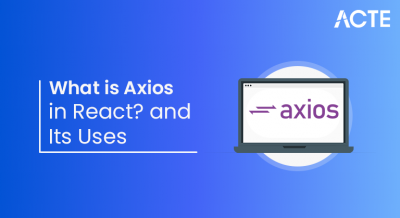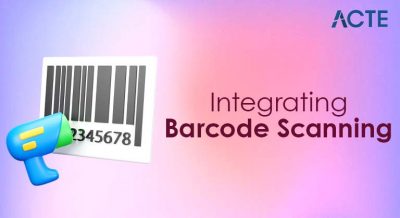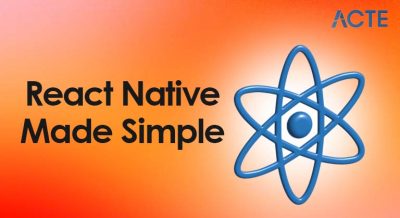
- Overview of Prototype Model
- Types of Prototypes
- Stages in Prototype Development
- Tools for Prototyping
- Benefits of the Prototype Model
- Prototype Model vs Waterfall Model
- User Feedback Integration
- Conclusion
Overview of Prototype Model
The Prototype Model in software engineering is an iterative development methodology that involves creating an early, simplified version of a software application called a prototype to visualize and refine system requirements. This prototype is built with limited functionality and is meant to demonstrate core features or concepts to the client. Once the initial prototype is developed, it is reviewed and evaluated by the client, whose feedback is used to refine the system. This cycle of building, testing, and refining continues until the prototype accurately reflects the client’s expectations and requirements. The main advantage of this model is its focus on iterative refinement. By involving the client throughout the development process, it helps ensure that the final product aligns closely with user needs, a key focus in Web Designing Training. This is especially useful when the client’s requirements are not well-defined at the start or are expected to evolve over time. Instead of gathering all requirements upfront, the Prototype Model allows requirements to emerge naturally through interactive feedback sessions. Prototyping helps bridge the gap between developers and clients, improves communication, and reduces misunderstandings. It also assists in identifying missing or unclear requirements early, minimizing the risk of costly changes in the later stages of development. However, it’s important to manage client expectations carefully, as prototypes are often mistaken for the final system and may lack the necessary robustness, scalability, or performance. Overall, the Prototype Model is highly effective for complex or user-driven projects, where flexibility and active client involvement are essential for the success of the final product.
Are You Interested in Learning More About Web Developer? Sign Up For Our Web Developer Courses Today!
Types of Prototypes
In software engineering, prototypes come in several types, each serving a specific purpose depending on the project’s complexity, user involvement, and clarity of requirements. One common type is the throwaway or rapid prototype, which is built quickly to explore ideas or clarify requirements. It is used primarily to gather user feedback and is discarded after serving its purpose. This type is ideal when requirements are vague or likely to change. On the other hand, evolutionary prototypes are designed to be refined and expanded gradually, evolving into the final product. These are useful when the system requirements are not fully understood at the beginning and are expected to develop over time, an important consideration in How to Become a PHP Developer. With evolutionary prototyping, the focus is on continuous improvement based on user feedback. Another approach is incremental prototyping, where the system is divided into smaller parts, and each part is prototyped and tested individually before being integrated into the final system. This modular approach allows for parallel development and makes it easier to manage large and complex projects. In the context of web development, extreme prototyping is commonly used.
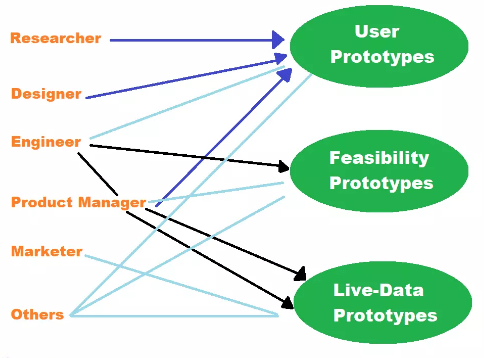
It involves building a static HTML prototype to simulate the user interface, followed by backend integration. This method helps clarify UI/UX design early in the project. Each of these prototype types offers unique benefits, from reducing misunderstandings to supporting flexible and iterative development. Choosing the right type of prototype based on project goals and client needs can significantly improve the effectiveness, quality, and user satisfaction of the final software product.
Stages in Prototype Development
- Requirement Gathering: This initial stage involves collecting the basic requirements and understanding the needs of the client or end-user. Since requirements may be unclear, the focus is on capturing key functionalities to guide prototype creation.
- Quick Design: Based on the gathered requirements, a preliminary design or rough layout of the system is created. This design is not detailed but provides a basic structure to build the prototype quickly.
- Building the Prototype: Developers create a working model of the system focusing on the core features identified during requirement gathering. The prototype is a simplified version of the final product designed to demonstrate functionality.
- User Evaluation: The prototype is shared with users or stakeholders for feedback, a crucial step in understanding What is Angular.
- Refinement: Based on the user feedback, the prototype is revised and improved. Changes may involve adding features, modifying existing ones, or removing unnecessary components to better align with user expectations.
- Iteration: The cycle of building, evaluating, and refining continues iteratively until users are satisfied with the prototype. This iterative process helps clarify requirements and reduce misunderstandings.
- Final Product Development: Once the prototype is approved, the final system is developed using the refined requirements. The prototype serves as a reference to ensure the finished product meets the agreed-upon standards.
- Wireframing Tools: Wireframing tools help create basic layouts and structure for applications or websites. They focus on visualizing the placement of elements without detailed design. Examples include Balsamiq and Wireframe.cc.
- Mockup Tools: Mockup tools allow designers to create high-fidelity static designs that show color schemes, typography, and graphics. These mockups give a better sense of the final product’s look. Popular tools are Sketch and Adobe XD.
- Interactive Prototyping Tools: These tools enable the creation of clickable prototypes with interactive elements, animations, and navigation flows, essential skills taught in Web Designing Training.
- Code-based Prototyping: For more advanced prototypes, developers use frameworks and libraries to build functional models with real code. React, Angular, and Vue.js are commonly used for interactive web prototypes.
- Collaboration Tools: Prototyping often requires input from multiple stakeholders. Collaboration platforms like Miro or Zeplin help teams share prototypes, gather feedback, and maintain version control.
- User Testing Tools: Once prototypes are ready, tools like UsabilityHub or Lookback facilitate user testing by recording interactions and gathering qualitative feedback to inform refinements.
- Low-Code/No-Code Platforms: These platforms allow rapid prototype creation without deep programming knowledge. Tools like Bubble or Webflow enable quick development of web applications with visual interfaces.
- Development Approach: The Waterfall Model follows a linear, sequential approach where each phase must be completed before moving to the next. The Prototype Model is iterative, focusing on building and refining prototypes through multiple cycles.
- Requirement Clarity: Waterfall requires clear, fixed requirements at the start of the project. The Prototype Model is ideal when requirements are unclear or expected to evolve, allowing ongoing user feedback to shape the system.
- Flexibility: Waterfall is rigid with limited scope for changes once a phase is finished, a limitation often discussed in the Basics of Service Design.
- User Involvement: In the Waterfall Model, users are mainly involved during the requirements and final testing phases. In the Prototype Model, users are actively engaged throughout, providing feedback on each prototype iteration.
- Risk Management: Waterfall carries higher risks if requirements are misunderstood early since issues surface late. Prototype Model reduces risk by identifying misunderstandings early through continuous prototyping and validation.
- Time and Cost: Waterfall can be faster if requirements are well-defined and stable. However, changes are costly. Prototype Model might take longer due to multiple iterations but can save cost by preventing rework later.
- Final Product Quality: Waterfall delivers a product that strictly follows initial requirements, which may be outdated if requirements change. Prototype Model often results in a product better aligned with user needs due to iterative refinement.
Would You Like to Know More About Web Developer? Sign Up For Our Web Developer Courses Now!
Tools for Prototyping
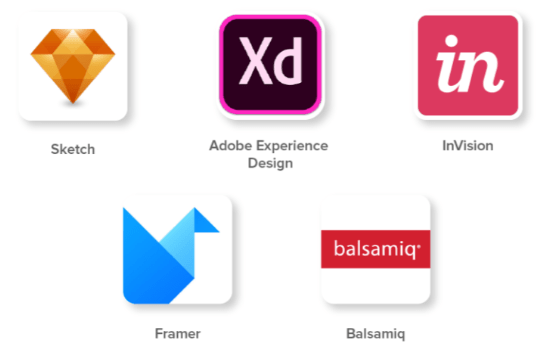
Benefits of the Prototype Model
The Prototype Model offers several significant benefits that make it a valuable approach in software development, especially when requirements are unclear or subject to change. One of the primary advantages is improved communication between developers and clients. By creating a tangible working model early in the development process, clients can better visualize the system and provide meaningful feedback. This interaction helps clarify requirements, reducing misunderstandings and ensuring the final product aligns closely with client expectations. Another benefit is the early detection of potential issues or missing functionality. Since the prototype is tested and reviewed throughout development, problems can be identified and addressed sooner, minimizing costly changes later in the project lifecycle. The iterative nature of prototyping supports flexibility and adaptability, allowing developers to incorporate changing requirements or new ideas without disrupting the entire project, a key difference highlighted in AngularJS Vs Angular 2 Vs Angular 4. This makes the Prototype Model especially suitable for projects where the scope is evolving or experimental features are involved. Additionally, prototyping can accelerate development by enabling early validation of design concepts and system architecture. It also encourages user involvement, which increases user satisfaction and ownership of the system. Furthermore, the Prototype Model reduces risk by breaking the development process into smaller, manageable iterations, making it easier to control and monitor progress. However, it is important to manage client expectations carefully, as prototypes are not final products and may lack performance or robustness. Overall, the Prototype Model’s benefits lie in fostering collaboration, improving requirement accuracy, enhancing flexibility, and reducing development risks, making it an effective methodology for many software projects.
Do You Want to Learn More About Web Developer? Get Info From Our Web Developer Courses Today!
Prototype Model vs Waterfall Model
User Feedback Integration
User feedback integration is a crucial aspect of the Prototype Model in software development, playing a central role in shaping the final product. By involving users early and continuously throughout the development process, developers gain valuable insights into the system’s usability, functionality, and overall effectiveness. This ongoing interaction allows the software to evolve in alignment with real user needs and expectations rather than relying solely on initial assumptions or incomplete requirements. When users test a prototype, they can identify features that work well, point out missing or confusing elements, and suggest improvements. This direct feedback helps developers prioritize changes, avoid costly mistakes, and focus on delivering value, an important consideration in the TypeScript Vs JavaScript debate. Moreover, integrating user feedback encourages collaboration and builds trust between stakeholders and the development team. It also helps prevent the problem of scope creep by clarifying what features are truly necessary versus those that may be nice to have but are not essential. The iterative cycles of building, testing, and refining based on user input create a dynamic development environment where flexibility is embraced, and adaptability becomes part of the process. As a result, the final software product is more user-friendly, effective, and aligned with business goals. Properly managing and incorporating user feedback requires good communication, documentation, and a structured approach to ensure that suggestions are feasible and consistent with the project scope. Ultimately, integrating user feedback in prototyping enhances satisfaction, reduces development risks, and leads to higher-quality software that meets or exceeds expectations.
Conclusion
The Prototype Model is a highly effective and adaptable approach in software engineering, particularly valuable for projects where requirements are unclear or expected to change frequently. Its core strength lies in the iterative process of building a working prototype, gathering user feedback, and refining the system based on that input. This cycle allows developers to engage closely with users, ensuring the software evolves in a way that truly meets their needs. Early user involvement helps uncover hidden or misunderstood requirements, reducing the risk of costly mistakes or rework late in development. Additionally, by visualizing concepts through prototypes, stakeholders gain a clearer understanding of the system’s functionality, which improves communication and decision-making. Despite its advantages, the Prototype Model does have some challenges. One common issue in Web Designing Training is scope creep, where continuous changes and additions extend the project beyond its original objectives. Without careful management, the iterative process can also lead to longer development timelines or increased costs. However, these drawbacks can be mitigated through proper planning, clear communication, and setting realistic expectations with clients about what a prototype represents versus the final product. The Prototype Model also aligns well with modern development methodologies like Agile, which emphasize flexibility, user collaboration, and incremental delivery. This compatibility makes it easier to incorporate prototyping within broader project workflows. By understanding the strengths and limitations of the Prototype Model, development teams can strategically apply it to create innovative, user-centered software solutions that adapt to evolving requirements while maintaining focus and control.


